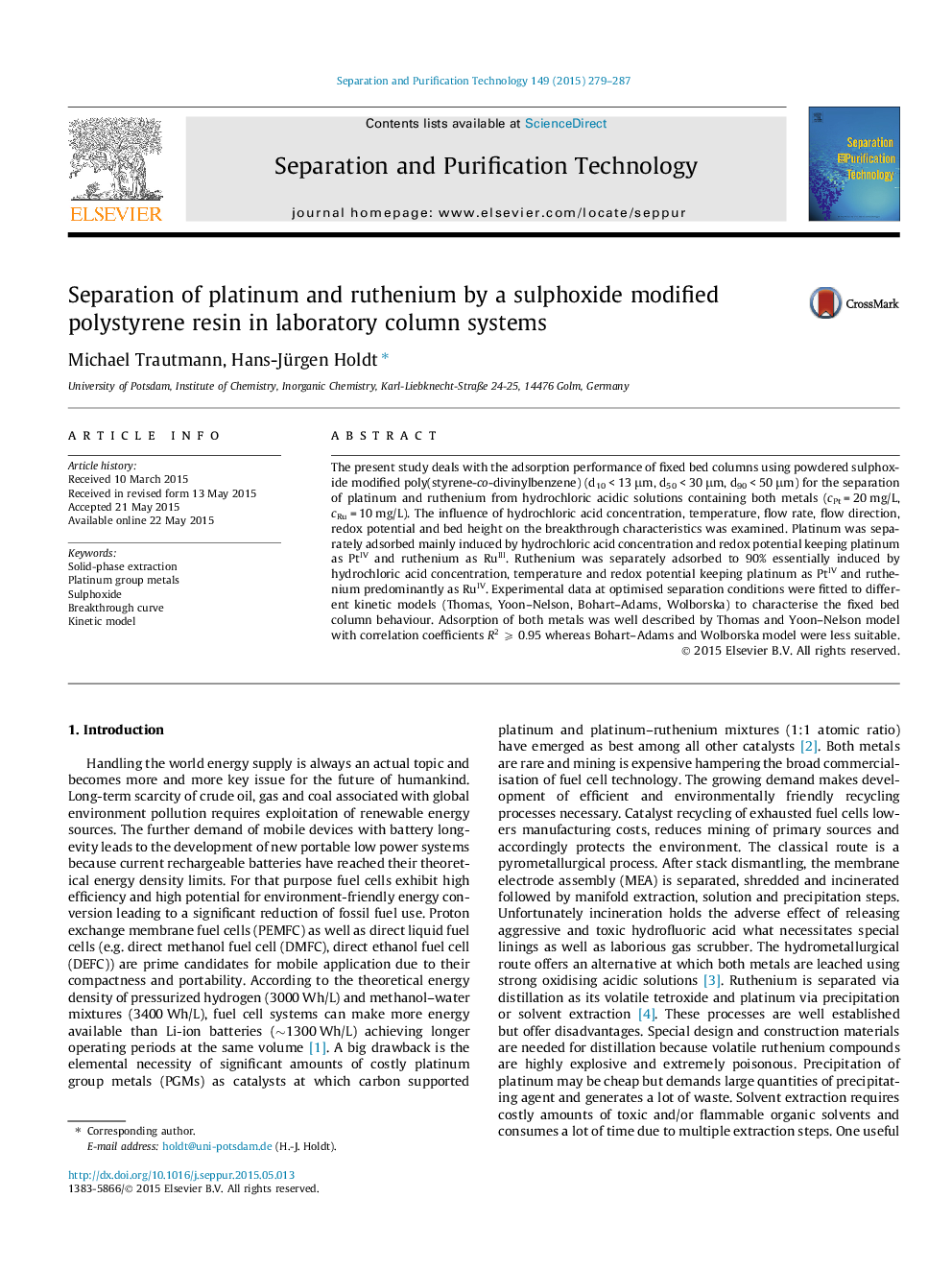| Article ID | Journal | Published Year | Pages | File Type |
|---|---|---|---|---|
| 640590 | Separation and Purification Technology | 2015 | 9 Pages |
•Separation and recovery of Pt and Ru using laboratory column systems was examined.•Powdered sulphoxide modified poly(styrene-co-divinylbenzene) was used as adsorbent.•Platinum was separately adsorbed at room temperature.•Ruthenium was separately adsorbed to 90% at elevated temperature.•The experimental breakthrough curves at optimised condition fitted well with Thomas and Yoon–Nelson model.
The present study deals with the adsorption performance of fixed bed columns using powdered sulphoxide modified poly(styrene-co-divinylbenzene) (d10 < 13 μm, d50 < 30 μm, d90 < 50 μm) for the separation of platinum and ruthenium from hydrochloric acidic solutions containing both metals (cPt = 20 mg/L, cRu = 10 mg/L). The influence of hydrochloric acid concentration, temperature, flow rate, flow direction, redox potential and bed height on the breakthrough characteristics was examined. Platinum was separately adsorbed mainly induced by hydrochloric acid concentration and redox potential keeping platinum as PtIV and ruthenium as RuIII. Ruthenium was separately adsorbed to 90% essentially induced by hydrochloric acid concentration, temperature and redox potential keeping platinum as PtIV and ruthenium predominantly as RuIV. Experimental data at optimised separation conditions were fitted to different kinetic models (Thomas, Yoon–Nelson, Bohart–Adams, Wolborska) to characterise the fixed bed column behaviour. Adsorption of both metals was well described by Thomas and Yoon–Nelson model with correlation coefficients R2⩾0.95R2⩾0.95 whereas Bohart–Adams and Wolborska model were less suitable.
